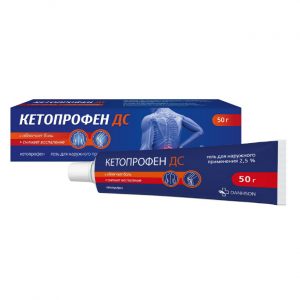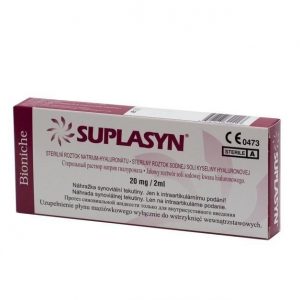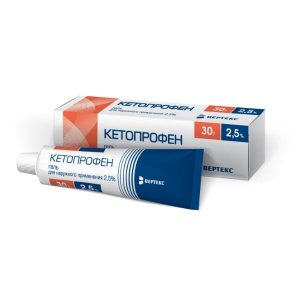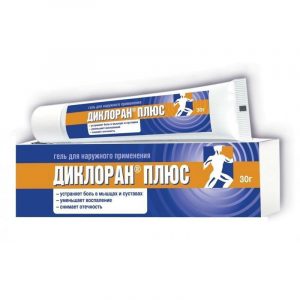Description
Latin name
FOROSA
Release form
Tablets.
packaging 8 pcs
Pharmacological action of
FOROSA is a non-hormonal specific inhibitor of osteoclastic bone resorption that suppresses the activity of osteoclasts. It stimulates osteogenesis, restores a positive balance between resorption and bone restoration, increases bone mineral density (regulates calcium-phosphorus metabolism), promotes the formation of bone tissue with a normal histological structure.
Indications
– treatment of osteoporosis in postmenopausal women, incl. to reduce the risk of compression fractures of the spine and femoral neck fractures
– treatment of osteoporosis in men to prevent fractures of
– treatment of osteoporosis caused by prolonged use of corticosteroids.
Contraindications
– strictures or achalasia of the esophagus and other conditions leading to slowing the progress of food through the esophagus
– inability of the patient to stand or sit for 30 minutes
– hypocalcemia
– severe renal failure (ml / s) severe disturbances of mineral metabolism
– pregnancy
– lactation (breastfeeding)
– childhood (efficacy and safety of use not established)
– hypersensitivity to alendronate or rugim ingredients.
With caution, the drug should be prescribed to patients with gastrointestinal diseases (dysphagia, gastritis, duodenitis, peptic ulcer in the acute stage, history of active gastrointestinal bleeding or upper gastrointestinal surgery), hypovitaminosis D.
Special instructions
Tablets should only be washed with plain water, as other drinks (including mineral water, tea, coffee, fruit juices) impair the absorption of the drug.
Taking alendronate at bedtime or in a horizontal position increases the risk of developing esophagitis.
Correction of hypocalcemia and other metabolic disorders (such as vitamin D deficiency) is necessary before starting Forosa ® therapy. Due to the increase in bone mineral density during therapy with alendronate, an insignificant clinically asymptomatic decrease in serum calcium and phosphate levels is possible, especially in patients receiving glucocorticosteroids, in which calcium absorption may be reduced. Therefore, ensuring the intake of a sufficient amount of calcium and vitamin D into the body is especially important in patients receiving corticosteroids.
Patients should be warned that if they accidentally skip the drug at a dosage of 1 time per week, they should take 1 tablet in the morning of the next day (it is unacceptable to take 2 tablets in one day). Subsequently, you should continue to take 1 tablet on that day of the week, which was selected at the beginning of therapy.
When prescribing other bisphosphonates, jaw osteonecrosis has rarely been observed. Most cases were reported in cancer patients during dental procedures, several cases in patients with postmenopausal osteoporosis or other diseases. Risk factors for osteonecrosis of the jaw include an established diagnosis of cancer, concomitant therapy (chemotherapy, radiation therapy, corticosteroids) and other disorders (anemia, coagulopathy, infection, gum disease). Most cases were noted with intravenous administration of bisphosphonates, but isolated cases were observed in patients receiving oral preparations.
Surgical dental surgery with bisphosphonate therapy may increase the manifestations of jaw osteonecrosis. It is not known whether abolition of bisphosphonates reduces the risk of osteonecrosis of the jaw. The decision to conduct treatment must be taken for each patient individually after assessing the risk / benefit ratio.
Composition
Sodium alendronate trihydrate.
Excipients: microcrystalline cellulose, anhydrous colloidal silicon dioxide, croscarmellose sodium, magnesium stearate.
Dosage and administration of
Tablets should be taken in the morning, no later than 30 minutes before the first meal, drink or other drug with a full glass of plain water (at least 200 ml). Tablets should not be chewed. Do not take a horizontal position of the body, at least for 30 minutes after taking the drug. You can not take the drug before bedtime or before the morning rise from bed.
The recommended dose is 70 mg (1 tablet) once a week.
For elderly patients and patients with moderate impaired renal function (CC more than 35 ml / min), dose adjustment is not required.
Side effects of the
Digestive system: abdominal pain, dyspeptic disorders (constipation or diarrhea, flatulence, nausea, vomiting), dysphagia, heartburn, esophagitis, gastric dystonia, ulceration of the mucous membrane of the mouth, pharynx, esophagus and digestive tract , melena.
From the nervous system: headaches, irritability.
From the musculoskeletal system: pain in the bones, muscles and joints, in the treatment with bisphosphonates, osteonecrosis of the jaw has rarely been observed.
From the side of the organ of vision: uveitis, scleritis.
Allergic reactions: hypersensitivity reactions (including flushing of the skin, urticaria, angioedema).
Other: photosensitization, asymptomatic transient hypocalcemia and hypophosphatemia.
Drug Interactions
The simultaneous use of calcium preparations (including food additives) and antacids impairs the absorption of alendronate. In this regard, it is recommended to take other medications no earlier than 30 minutes after taking Forosa ®.
NSAIDs (including acetylsalicylic acid) can enhance the side effects of alendronic acid from the gastrointestinal tract.
Although there have been no special studies on drug interactions, the use of alendronate in clinical studies with a large number of widely used drugs was not accompanied by the development of clinically significant interactions.
Storage conditions
At a temperature not exceeding 25 ° C.
Shelf life
2 years.
Deystvuyushtee substance
Alendronovaya Chisloth
Terms and conditions otpuska IZ drugstore
prescription
dosage form
tablets
Possible product names
FOROSA 0.07 N8 TABLE P / O
Forosa 70 mg Tab. cover captivity. about. X8 (R)
Forosa 70mg Tab. cover captivity. about. X8 (R) /! Until 09.14g /
Forosa 70mg No. 8
FOROSA 70MG. No. 8 TAB. P / O
Sandoz, Switzerland




